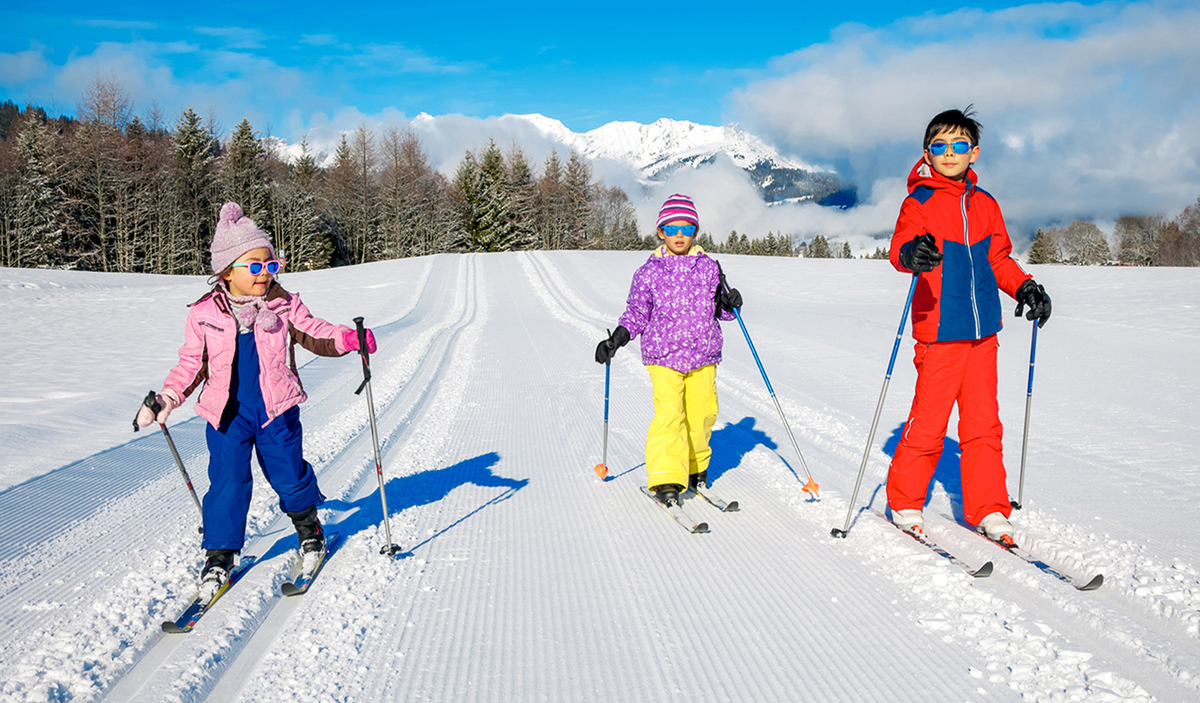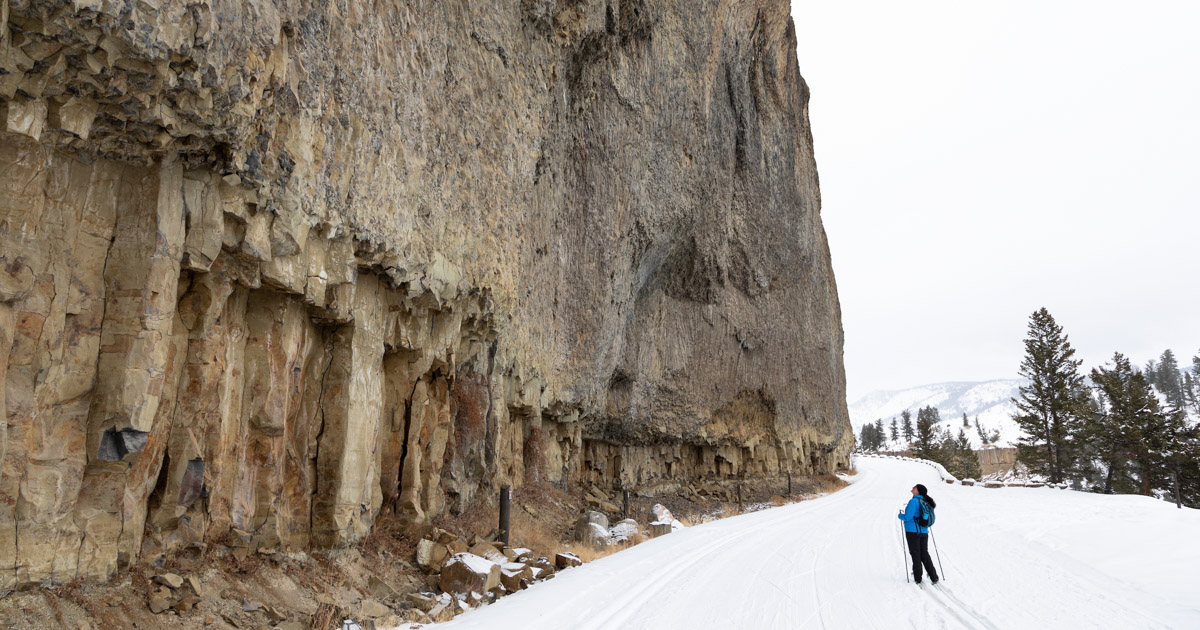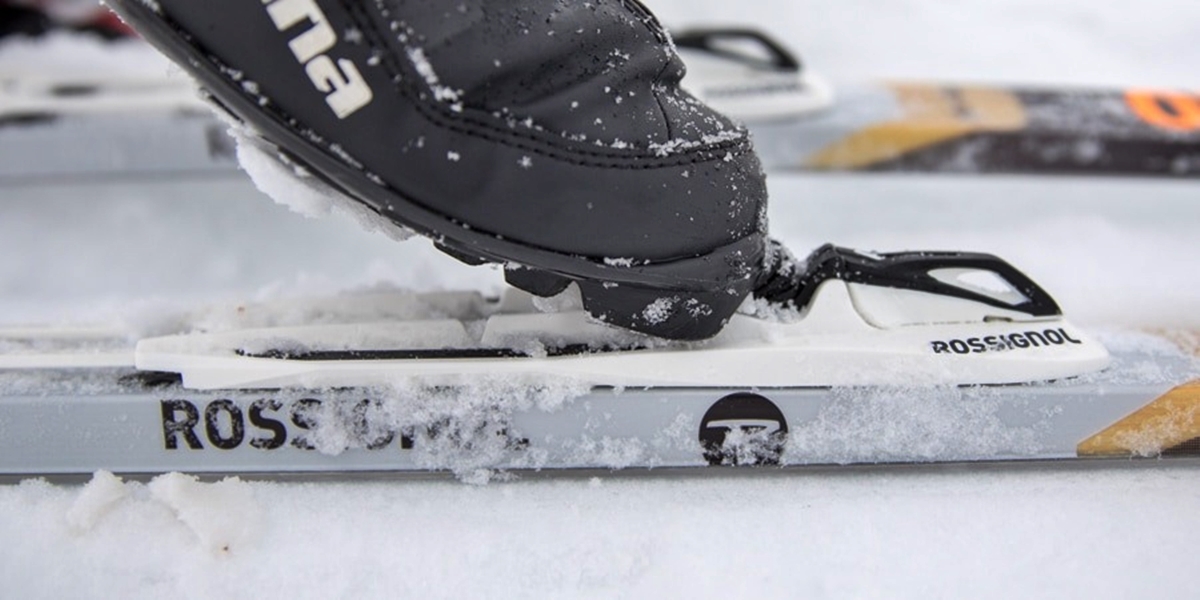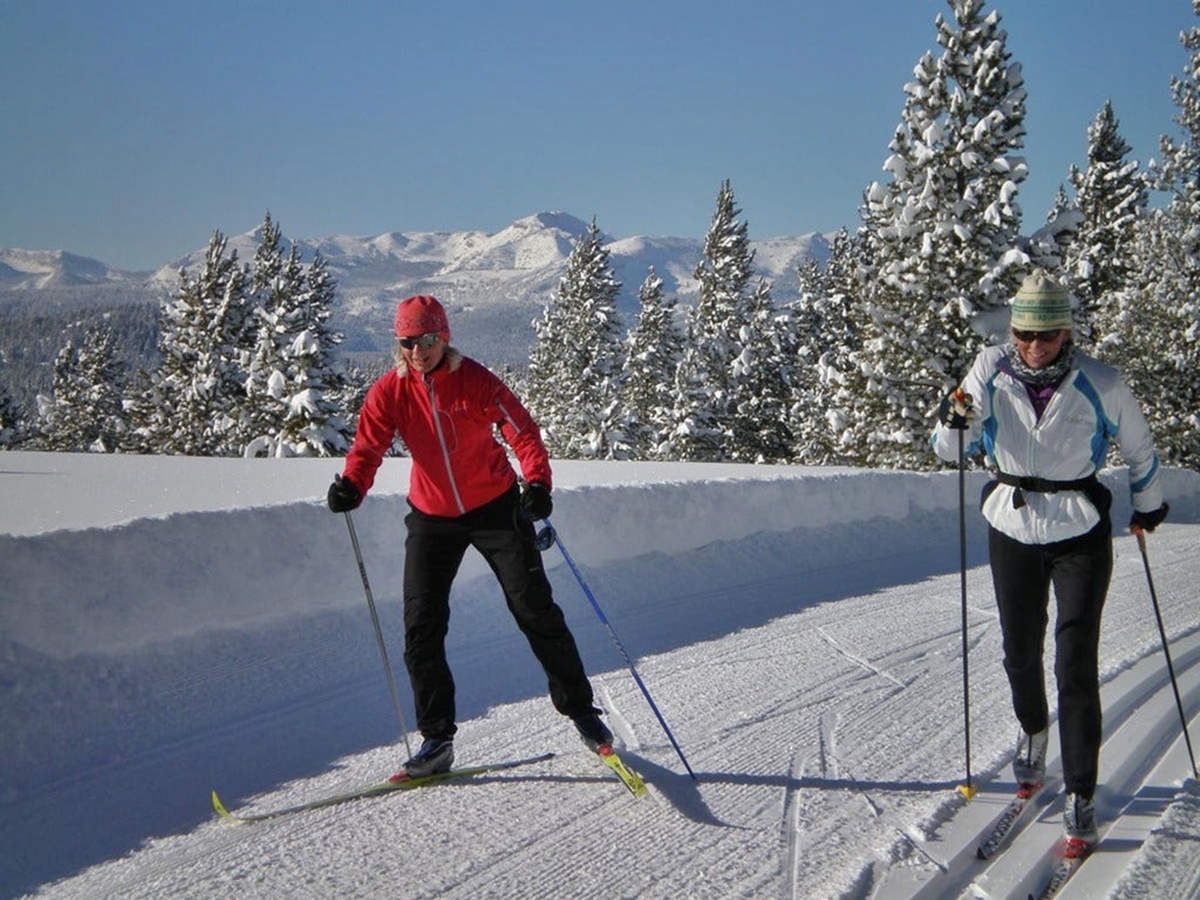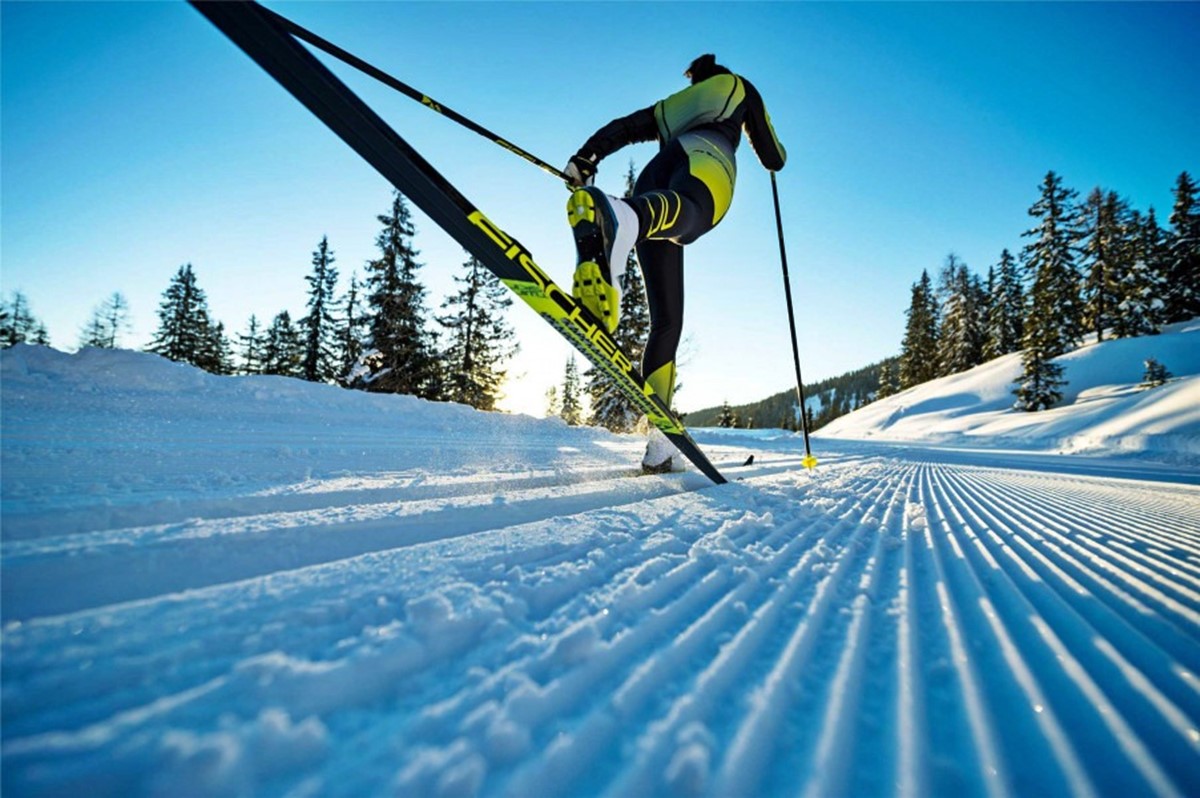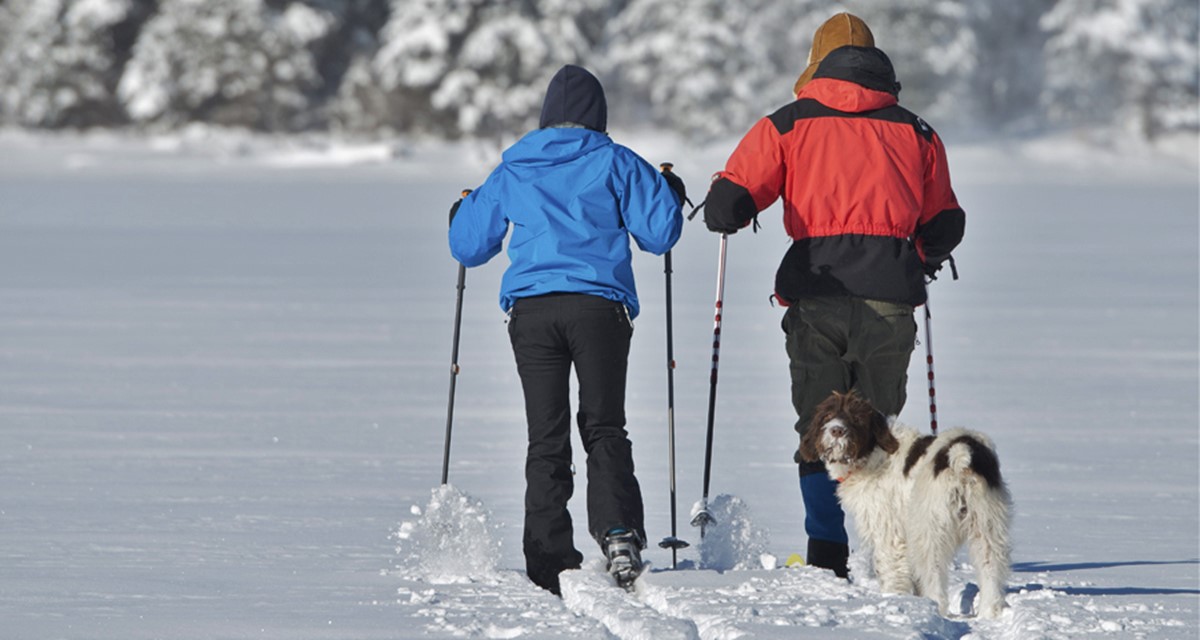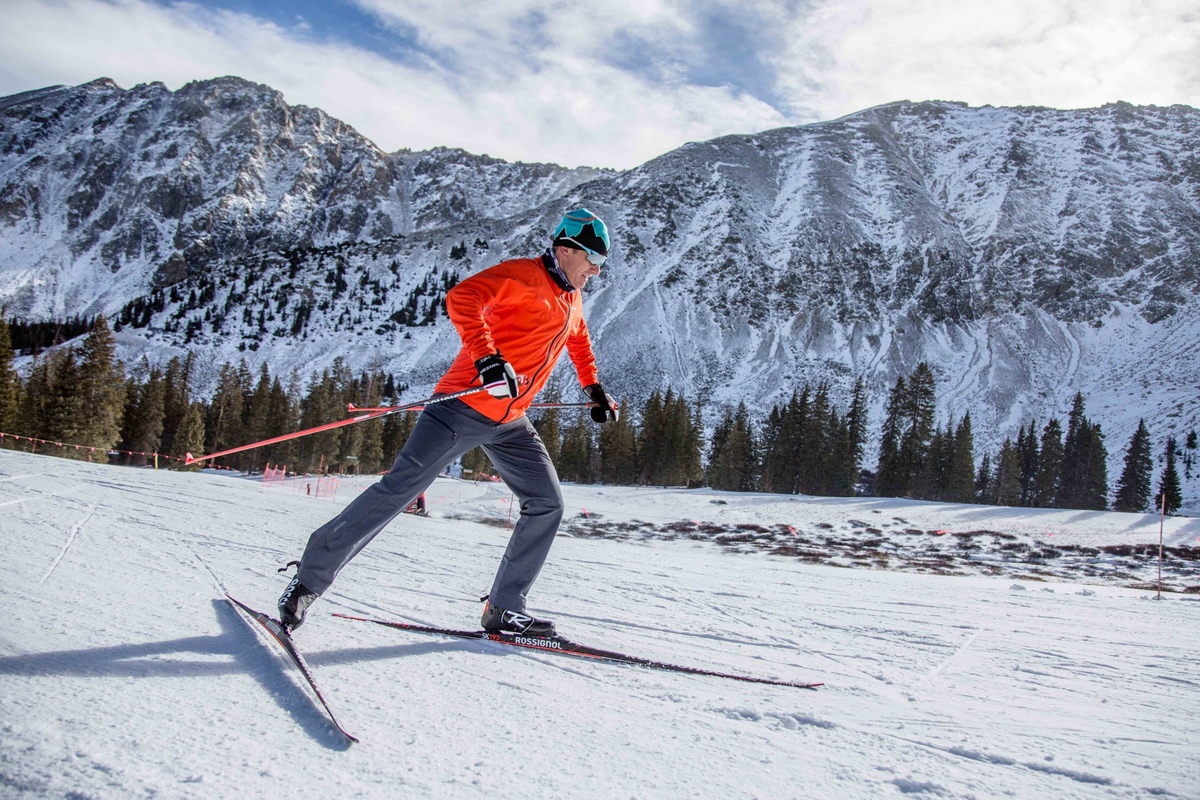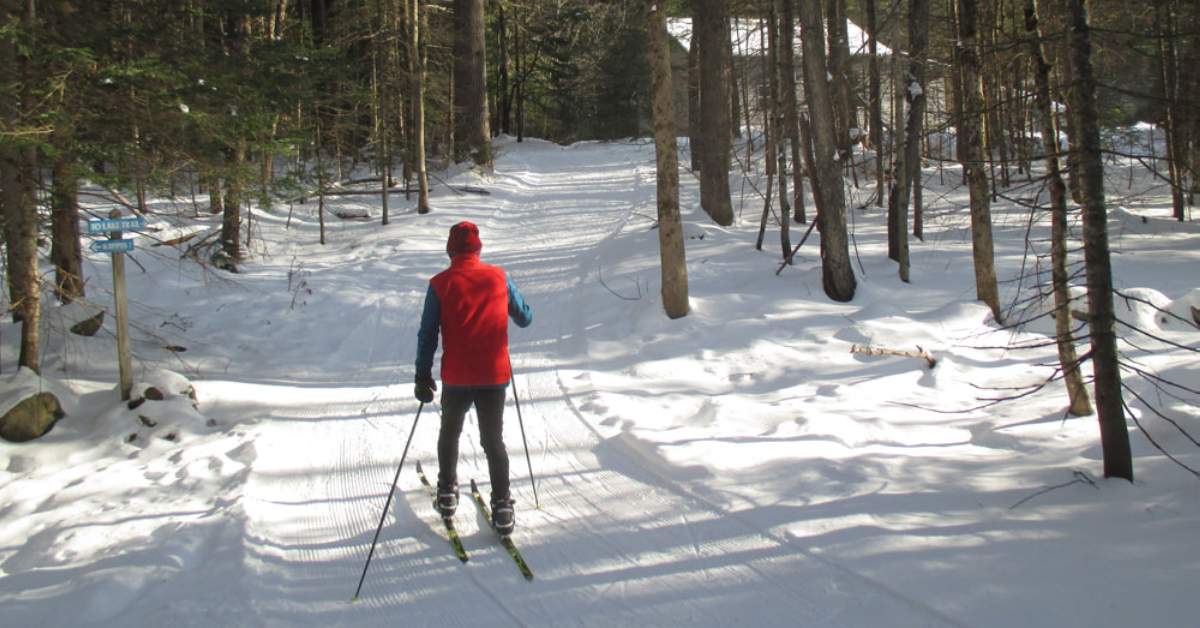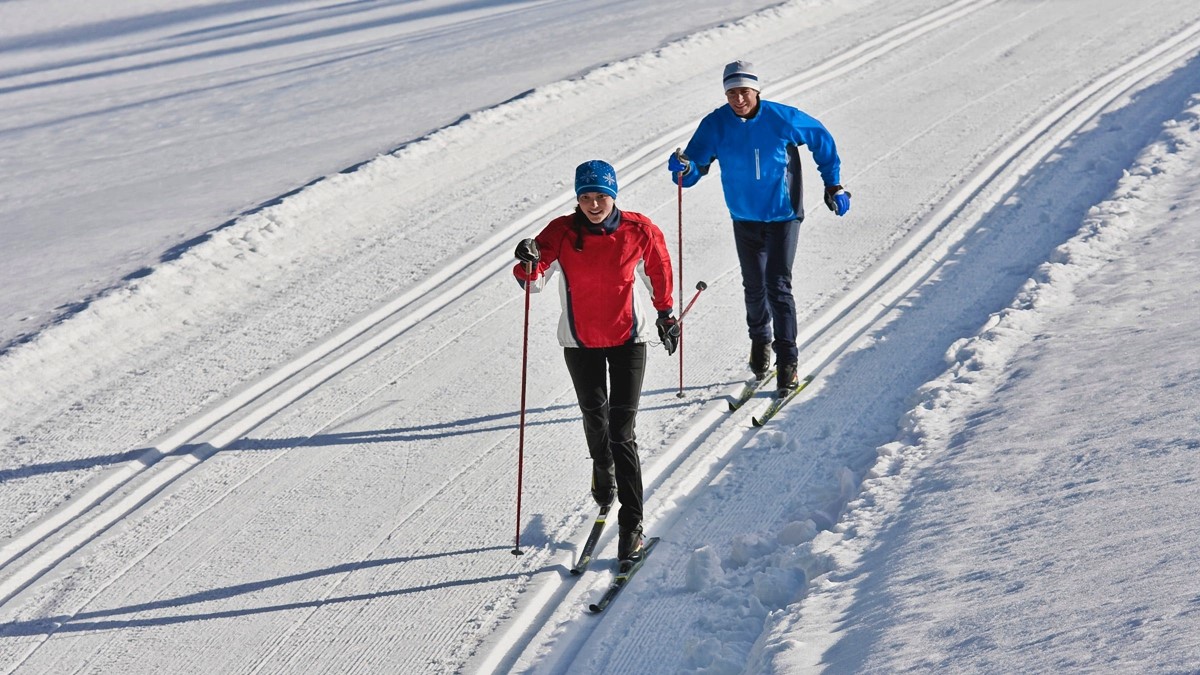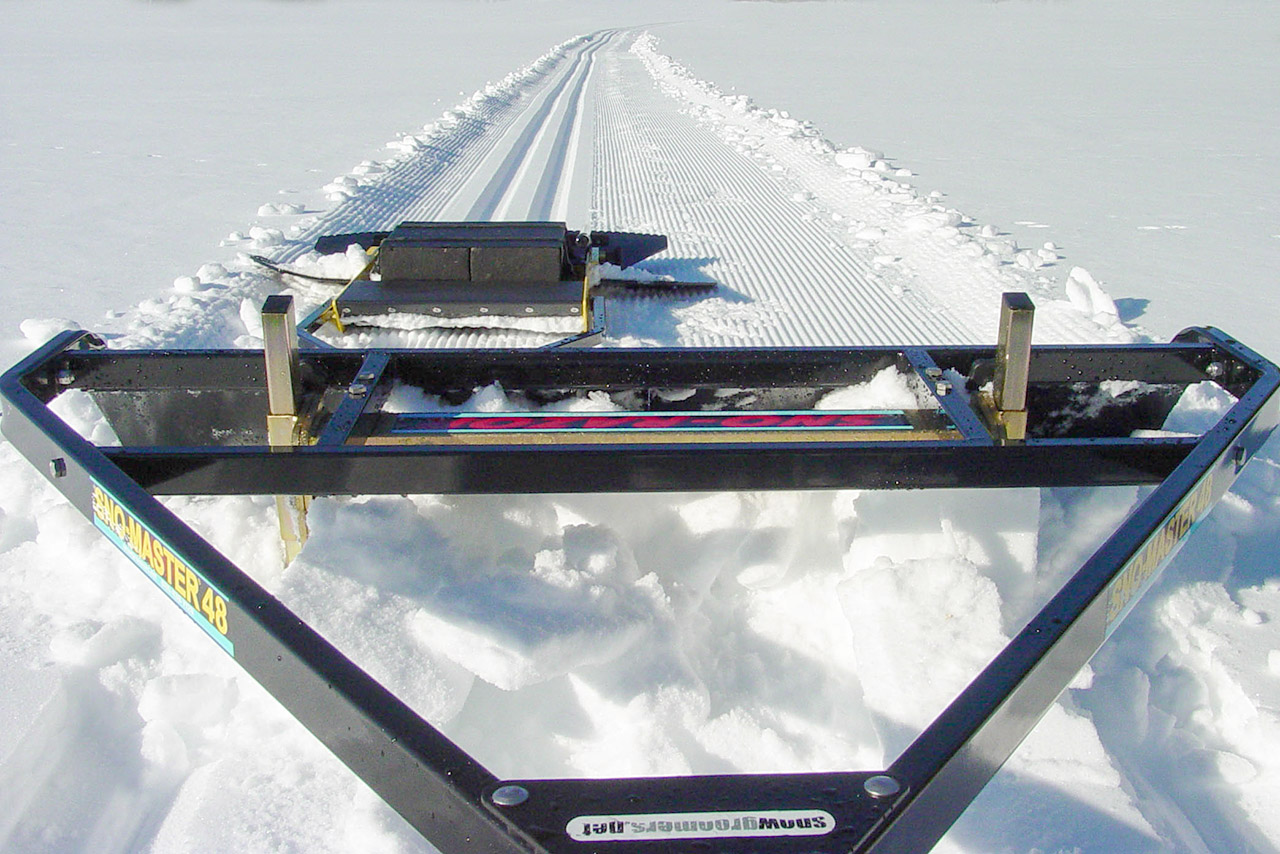Home>Misc>Featured>Which Is Faster? Classic Or Skating Style Cross Country Skiing?
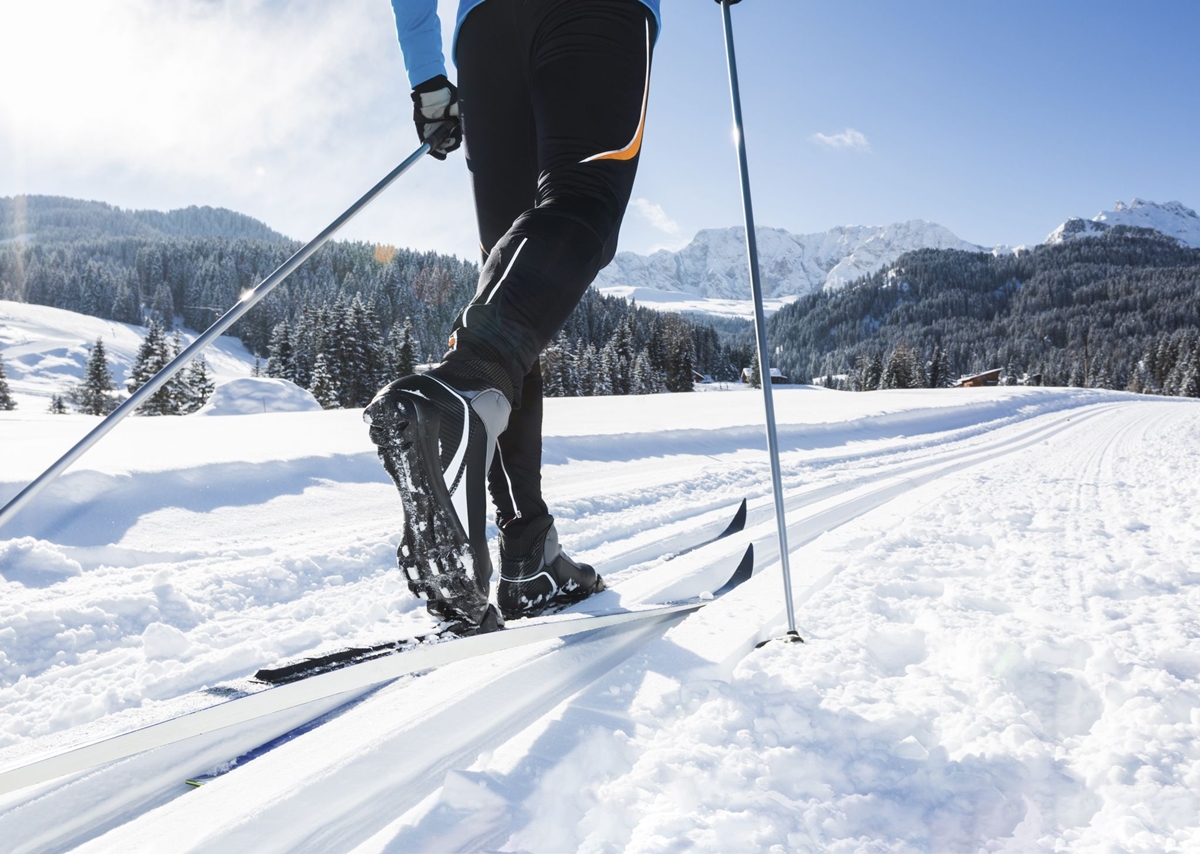

Featured
Which Is Faster? Classic Or Skating Style Cross Country Skiing?
Modified: January 22, 2024
Discover which cross country skiing style is faster - classic or skating. Read our featured article to find out the pros and cons of each technique.
Introduction
Cross country skiing is a popular winter sport that combines cardiovascular exercise, strength, and endurance. There are two main techniques used in cross country skiing: the Classic style and the Skating style. These techniques differ in terms of technique, equipment, and speed, making them suitable for different preferences and terrains.
The Classic style, also known as the Diagonal stride technique, is the traditional method of cross country skiing. In this style, skiers move in a straight line by pushing off with one ski while gliding forward on the other. The Skating style, on the other hand, mimics the motion of ice skating, with skiers pushing their skis outward in a V-shape to generate forward momentum.
But which style is faster? Many factors come into play when determining the speed of a cross country skier. The terrain, snow conditions, technique proficiency, and individual fitness level all affect how fast a skier can go in each style. In this article, we will explore the differences between Classic and Skating style skiing and examine the factors that influence speed in each technique. Additionally, we will discuss the advantages and disadvantages of each style to help you make an informed decision about which technique is right for you.
Definition of Classic Style Cross Country Skiing
The Classic style of cross country skiing, also known as the Diagonal stride technique, is the oldest and most traditional form of the sport. It involves a forward motion that resembles walking or jogging on skis. Skiers kick with one leg while gliding on the opposite ski.
In classic style skiing, the skis remain parallel throughout the entire stride, and the movement is generated primarily by the legs. The arms play a supporting role, assisting in balance and propulsion. Skiers use poles to assist with timing and rhythm, planting them in the snow as they push off with their legs.
What sets Classic style skiing apart is the use of grip wax or a grip zone in the middle of the ski’s base. The grip wax allows the skier to kick and generate forward momentum without slipping backward. This grip allows for effective uphill climbing and provides stability on flat terrain.
The overall technique of Classic style skiing requires coordination between the upper and lower body. The leg movements are long, smooth, and rhythmic, resembling a walking or jogging motion. It is a more relaxed and natural technique compared to the Skating style, making it appealing to beginners and those who prefer a slower-paced skiing experience.
Classic style skiing is commonly used for recreational skiing, nature exploration, and long-distance skiing races. It is also an official technique in competitive cross country skiing events, including the Olympic Games and World Championships.
In summary, Classic style skiing involves a straightforward kicking motion with the legs while gliding on the opposite ski. It is known for its parallel ski positioning, use of grip wax or grip zone, and coordination between the upper and lower body. Classic style skiing is popular among recreational skiers and is a competitive technique in cross country skiing events.
Definition of Skating Style Cross Country Skiing
Skating style cross country skiing, also known as the Freestyle technique, is a more dynamic and athletic form of the sport. This technique mimics the motion of ice skating, with skiers pushing their skis outward in a V shape to generate forward momentum.
In skating style skiing, the skis are angled outward, forming a slight V-shape, and the movement is generated primarily by the upper body. Skiers use a combination of leg power, arm swing, and core stability to propel themselves forward. Unlike Classic style skiing, the skis are not parallel and alternate between a gliding and pushing motion.
One key feature of skating style skiing is the absence of grip wax or a grip zone. Skiers rely entirely on the glide of their skis for propulsion, allowing for a more continuous and fluid motion. As a result, this technique is better suited for flat or gently rolling terrain with well-groomed tracks.
The technique in skating style skiing involves a more upright body position compared to Classic style skiing. Skiers shift their weight from side to side, generating power with each skate. The arm swing is more pronounced and coordinated with the leg push, further propelling the skier forward.
Skating style skiing is known for its speed and efficiency, making it a popular choice for competitive skiers and those seeking a more intense workout. It requires a higher level of balance, coordination, and strength compared to Classic style skiing. Skating style is commonly used in sprint races, as well as in shorter distance and speed-oriented events.
In summary, skating style cross country skiing involves a dynamic and athletic motion, resembling ice skating. Skiers push their skis outward in a V shape, relying on glide rather than grip for propulsion. The technique requires a more upright body position, utilizes arm swing, and is known for its speed and efficiency. Skating style skiing is popular among competitive skiers and those seeking a more intense workout.
Differences between Classic and Skating Style Techniques
While both Classic style and Skating style techniques are used in cross country skiing, they differ significantly in terms of movement, equipment, and overall experience on the snow. Understanding these differences can help you decide which technique is best suited for your preferences and objectives.
1. Movement:
The most apparent difference between Classic and Skating style techniques is the movement. In Classic style skiing, skiers use a walking or jogging motion, kicking with one leg while gliding on the other. The skis remain parallel throughout the stride, and the arms assist in balance and propulsion. In contrast, Skating style skiing mimics the motion of ice skating. Skiers push their skis outward in a V-shape, utilizing more upper body power and creating a more dynamic and fluid motion.
2. Equipment:
Each technique requires specific equipment. In Classic style skiing, skiers use longer, narrower skis with grip zones or grip wax in the middle of the ski’s base. This allows for effective kick and grip, especially on uphill sections. Skating style skiing requires shorter, wider skis with no grip wax or grip zone. The skis are designed for better glide and maneuverability, allowing for more efficient movement in a V-shape pattern.
3. Speed:
When it comes to speed, Skating style skiing is generally faster than Classic style skiing. The dynamic pushing motion and continuous glide of skating style allow skiers to maintain a higher velocity on flat terrain and gentle slopes. However, in certain conditions, such as steep uphill sections or deep snow, the grip and kick of the Classic style can provide an advantage and potentially match the speed of skating style.
4. Technique Proficiency:
Both Classic and Skating style techniques require specific skills and technique proficiency. Classic style skiing is often considered more accessible to beginners due to its resemblance to walking or jogging. Skating style skiing, on the other hand, requires a higher level of balance, coordination, and upper body strength. It may take more time and practice to become proficient in the Skating style technique.
5. Terrain and Snow Conditions:
The choice between Classic and Skating style skiing also depends on the terrain and snow conditions. Classic style skiing is well-suited for various snow conditions, including fresh powder and icy tracks. It is preferred for uphill climbing and offers stability on flat terrain. Skating style skiing, with its reliance on well-groomed tracks and glide, performs best on firm, compact snow surfaces and flat or gently rolling terrain.
In summary, Classic style and Skating style techniques differ in terms of movement, equipment, speed, technique proficiency, and compatibility with different terrains and snow conditions. Both techniques offer unique experiences and challenges, and the choice ultimately depends on individual preferences, skill level, and the type of skiing experience desired.
Comparison of Speed in Classic and Skating Style Skiing
When it comes to cross country skiing, speed is an important factor for many skiers, whether they are racing competitively or simply seeking a brisk and exhilarating experience on the snow. The speed potential varies between Classic style and Skating style techniques due to their different movement patterns and equipment considerations.
Skating style skiing is generally known for its speed. The dynamic pushing motion, combined with the continuous glide and efficient use of the body’s power, allows skiers to maintain a higher velocity on flat terrain and gentle slopes. Skating style skiing is particularly effective on well-groomed tracks and firm, compact snow surfaces. Skiers can generate a longer and more powerful glide with each push, resulting in faster overall speeds.
On the other hand, Classic style skiing tends to be slower compared to Skating style skiing. This is mainly due to the fact that Classic style relies on a kicking motion with one leg, followed by a gliding motion on the opposite ski. The gliding phase in Classic skiing is not as continuous and dynamic as in Skating style, and the speed is dependent on the skier’s ability to generate a powerful kick. However, in certain conditions, such as steep uphill sections or deep snow, the grip and kick of the Classic style can provide an advantage and potentially match the speed of skating style.
It’s important to note that speed in cross country skiing is influenced by various factors, including individual technique proficiency, physical fitness, and snow conditions. A skilled and experienced skier in Classic style could potentially match the speed of a less proficient skier in Skating style, depending on these factors. Additionally, the terrain plays a significant role in speed. Classic style skiing is often preferred for uphill sections, where the grip and kick of the technique can provide an advantage.
Overall, Skating style skiing is generally considered faster than Classic style skiing, thanks to its dynamic motion and efficient use of the body’s power. However, speed is not the only factor to consider when choosing a technique. Skiers should also take into account their preferences, skill level, terrain conditions, and fitness goals to determine the most suitable style for their skiing experience.
Factors Affecting Speed in Classic Style Skiing
The speed in Classic style skiing depends on various factors that influence the efficiency and effectiveness of the technique. Understanding these factors can help skiers optimize their performance and increase their speed on the snow.
1. Grip Wax or Grip Zone: The choice and application of grip wax or the presence of a grip zone on the ski’s base are crucial factors that affect speed in Classic style skiing. The grip wax provides the necessary traction to prevent the ski from slipping backward during the kick phase. The selection of the appropriate grip wax for the snow conditions, temperature, and skier’s weight is essential for optimal grip and kick.
2. Kick Technique: The proper execution of the kick technique is key to generating forward momentum in Classic style skiing. Skiers need to effectively transfer body weight onto the ski, ensuring a solid kick that propels them forward. Proper weight transfer, coordination of the arms, and timing of the kick are fundamental for efficient and powerful movement.
3. Glide Technique: While Classic style skiing relies more on the kick technique for propulsion, the glide phase also plays a significant role in overall speed. Skiers need to focus on achieving a smooth and efficient glide by minimizing drag and resistance. This includes maintaining a proper body position, utilizing a balanced weight distribution, and finding the optimal rhythm between the kicking and gliding motions.
4. Snow Conditions: The characteristics of the snow have a considerable impact on the speed in Classic style skiing. The texture, temperature, and moisture content of the snow affect the performance of the grip wax and the gliding ability of the skis. Dry and cold snow tends to provide better glide, while wet and soft snow can make it challenging to achieve effective grip and glide. Skiers need to adjust their technique and grip wax selection accordingly to optimize speed in different snow conditions.
5. Skier’s Fitness and Technique Proficiency: The speed in Classic style skiing is also influenced by the skier’s fitness level and technical proficiency. Endurance, strength, and cardiovascular fitness contribute to sustained speed throughout a skiing session. Additionally, proper technique, including efficient weight transfer, powerful kicks, and smooth gliding, can significantly enhance speed and overall performance.
6. Terrain: The nature of the terrain, including flat sections, uphill climbs, and downhill descents, affects the speed in Classic style skiing. Skiers can maintain a faster pace on flatter sections, utilizing the gliding motion to their advantage. Uphill climbs require a more powerful kick and proper weight transfer to overcome the gravity, while downhill descents may allow for faster speeds with minimal effort.
By considering and optimizing these factors, skiers can increase their speed and overall performance in Classic style skiing. It is essential to practice and refine technique, adapt to different snow conditions, and maintain physical fitness to achieve the desired speed and enjoy the full potential of Classic style skiing.
Factors Affecting Speed in Skating Style Skiing
Skating style skiing, with its dynamic and athletic motion, allows skiers to achieve faster speeds compared to Classic style skiing. However, several factors influence the speed potential in Skating style skiing and can impact the overall performance on the snow.
1. Technique Efficiency: The efficiency and proficiency of the Skating style technique directly affect the speed. Skiers need to master the proper execution of the skating motion, which involves pushing the skis outward in a V-shape while utilizing upper body power. Developing a smooth and continuous rhythm, along with proper weight transfer and body positioning, enhances speed and efficiency in this technique.
2. Glide Ability: Glide plays a crucial role in achieving speed in Skating style skiing. Skis with good glide properties, such as appropriate camber and glide wax, allow skiers to maintain momentum and speed between each push. Skiers should focus on minimizing resistance and maximizing glide by keeping the skis parallel and generating a powerful push-off with each skating stride.
3. Fitness Level: Physical fitness, especially lower body strength and cardiovascular endurance, significantly influences speed in Skating style skiing. Strong leg muscles provide the power necessary to generate forceful pushes, while a high level of cardiovascular fitness enables endurance and sustained speed over longer distances. Regular training and conditioning improve overall fitness levels, directly impacting speed and performance.
4. Upper Body Power: While the lower body plays a significant role in generating speed, the upper body’s contribution should not be underestimated in Skating style skiing. The arm swing and core stability provide additional power and balance, assisting in the push-off and overall propulsion. A strong and coordinated upper body motion amplifies the pushing force and contributes to faster speeds.
5. Snow Conditions: The characteristics of the snow surface affect the speed potential in Skating style skiing. Firmer and compacted snow surfaces provide better glide and faster speeds. Dry and cold snow conditions tend to have less drag and resistance, enabling skiers to achieve higher velocities. On the other hand, soft and wet snow can slow skiers down due to increased resistance and potential for ski sinkage.
6. Terrain: The terrain also plays a role in speed variations in Skating style skiing. Flat or gently rolling terrain allows skiers to maintain a higher pace and utilize the gliding motion to their advantage. Uphill sections require more effort and power generation in each push-off to overcome gravity, potentially decreasing speed. Conversely, downhill descents may allow for faster speeds with reduced effort due to gravity assistance.
By considering and optimizing these factors, skiers can enhance their speed and performance in Skating style skiing. Regular technical practice, focus on efficient technique, proper equipment maintenance, maintaining physical fitness, and adapting to different snow and terrain conditions play crucial roles in achieving maximum speed and enjoyment in Skating style skiing.
Advantages and Disadvantages of Classic Style Skiing
Classic style skiing, also known as the Diagonal stride technique, offers a unique and enjoyable experience on the snow. Like any other technique, it has its advantages and disadvantages that can influence a skier’s preference and choice of style.
Advantages:
- Access to Diverse Terrain: Classic style skiing is well-suited for various terrains, including uphill climbs and flatter sections. The grip wax or grip zone allows for effective traction on uphill sections, making it easier to ascend steeper slopes.
- Stability and Control: Classic style skiing offers excellent stability, making it ideal for beginners and those seeking a more relaxed and controlled skiing experience. The parallel ski positioning and symmetric glide provide a sense of balance and stability.
- Natural Walking or Jogging Motion: The motion of Classic style skiing closely resembles walking or jogging and feels more intuitive compared to the dynamic and athletic motion of Skating style skiing. This familiarity can make it easier for newcomers to learn and enjoy the sport.
- Compatible with Various Snow Conditions: Classic style skiing accommodates a wide range of snow conditions, including fresh powder and icy tracks. The grip wax or grip zone provides reliable grip, ensuring stability and control even in challenging snow conditions.
- Endurance and Long-Distance Skiing: Classic style skiing is favored for longer distance skiing and endurance events. The rhythmic and efficient motion allows skiers to maintain a steady pace over extended periods, making it suitable for recreational skiers and long-distance races.
Disadvantages:
- Slower Speed: Classic style skiing is generally slower compared to Skating style skiing. The gliding motion in Classic skiing is not as continuous and dynamic, resulting in a lower overall speed. Skiers seeking a faster-paced skiing experience may prefer the speed potential of Skating style.
- Technique Complexity: While Classic style skiing may be more accessible to beginners, mastering the technique and achieving efficient kick and glide can be challenging. Proper weight transfer and timing are integral to generating forward momentum, requiring practice and skill refinement.
- Reliance on Grip Wax: Classic style skiing’s reliance on grip wax or grip zone on the ski’s base means wax selection and maintenance are crucial for optimal performance. Different snow conditions and temperatures necessitate regular adjustment and testing of grip wax, which can be time-consuming and require additional equipment.
- Less Dynamic Upper Body Movement: Classic style skiing involves less dynamic upper body movement compared to Skating style skiing. The arm swing in Classic skiing primarily assists in balance and propulsion, resulting in less upper body engagement and potential for a less intense workout.
Ultimately, the choice between Classic style skiing and other techniques, such as Skating style, depends on an individual’s preferences, skill level, and desired skiing experience. Classic style skiing offers stability, control, and access to diverse terrains, making it a popular choice among beginners, recreational skiers, and long-distance enthusiasts.
Advantages and Disadvantages of Skating Style Skiing
Skating style skiing, also known as the Freestyle technique, offers a dynamic and exhilarating experience on the snow. Like any other technique, it has its advantages and disadvantages that should be considered when choosing a skiing style.
Advantages:
- Speed and Efficiency: Skating style skiing is known for its speed and efficiency. The dynamic pushing motion and continuous glide allow skiers to maintain a higher velocity on flat terrain and gentle slopes. Skating style skiing is particularly suited for those seeking a fast-paced and intense skiing experience.
- Full-Body Workout: Skating style skiing engages the entire body, providing a full-body workout. The constant push-off and use of the upper body in coordination with the lower body result in improved cardiovascular fitness, enhanced upper and lower body strength, and increased core stability.
- Maneuverability and Agility: The V-shaped push-off in Skating style skiing provides greater maneuverability and agility, allowing skiers to navigate tight turns, quickly change direction, and adapt to varying terrain contours. This technique offers more versatility in challenging and undulating trails.
- Glide Potential: Skating style skiing relies heavily on glide, allowing skiers to cover more distance with each push. Well-groomed tracks and firm snow surfaces, such as those found in cross country ski resorts and racing venues, maximize the glide potential and enhance the overall skiing experience.
- Racing and Sprint Events: Skating style skiing is the preferred technique in competitive cross country skiing events, including sprint races and shorter distance races. The speed, efficiency, and agility of Skating style make it well-suited for competitive skiers aiming for podium finishes or personal bests.
Disadvantages:
- Technique Complexity: Skating style skiing requires a higher level of balance, coordination, and technique proficiency compared to other skiing styles. The proper execution of the push-off, weight transfer, and arm swing coordination can take time and practice to master, especially for beginners.
- Equipment Considerations: Skating style skiing requires specific equipment, including shorter and wider skis without grip zones. The need for sturdy and well-maintained skis, along with the cost associated with proper gear, can be a disadvantage for those new to the sport or on a tight budget.
- Terrain Restrictions: Skating style skiing is best suited for flat or gently rolling terrains. Steeper uphill sections may require additional effort, and the efficiency of the skating motion may be compromised. Skiers seeking more challenging and mountainous terrains may need to switch to other skiing techniques.
- Snow Conditions Sensitivity: Skating style skiing performance is influenced by the snow conditions, particularly having a firm and well-groomed snow surface. Softer or deep snow conditions can increase resistance and make it more challenging to achieve optimal glide, potentially affecting overall speed and performance.
Ultimately, the choice to ski in the Skating style depends on an individual’s preferences, skill level, and desired skiing experience. Skating style skiing offers speed, efficiency, and a full-body workout, making it popular among competitive skiers and those seeking an intense and exhilarating skiing experience.
Conclusion
Cross country skiing offers two main techniques: Classic style and Skating style, each with its advantages and considerations. The Classic style, with its parallel ski positioning and walking or jogging motion, provides stability, control, and access to diverse terrain. It is well-suited for beginners, long-distance skiing, and uphill climbs.
Skating style skiing, on the other hand, is known for its speed, efficiency, and dynamic motion. It offers a full-body workout, maneuverability, and a thrilling skiing experience. Skating style is favored by competitive skiers and those seeking a fast-paced and intense workout on well-groomed tracks.
When choosing between Classic and Skating style skiing, several factors should be taken into consideration. These factors include personal preferences, skill level, terrain conditions, and desired skiing experience. Classic style skiing may appeal to individuals who value stability, control, and a more relaxed skiing experience, while Skating style skiing may attract those seeking speed, agility, and a full-body workout.
In the end, there is no definitive answer as to which style is better. Both Classic and Skating style techniques have their strengths and suit different preferences and skiing objectives. Some skiers may even choose to switch between the two styles depending on the terrain and snow conditions.
It is important for skiers to explore and experiment with both techniques to find the one that best suits their abilities and desired skiing experience. Whether gliding through pristine trails in Classic style or powering through with dynamic strides in Skating style, cross country skiing offers a rewarding and exhilarating winter sport experience for all!
